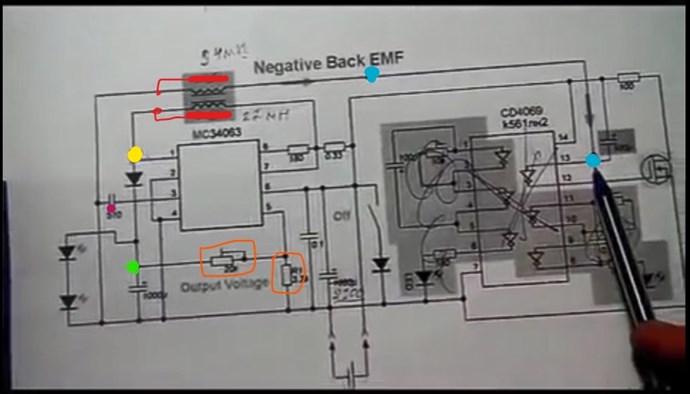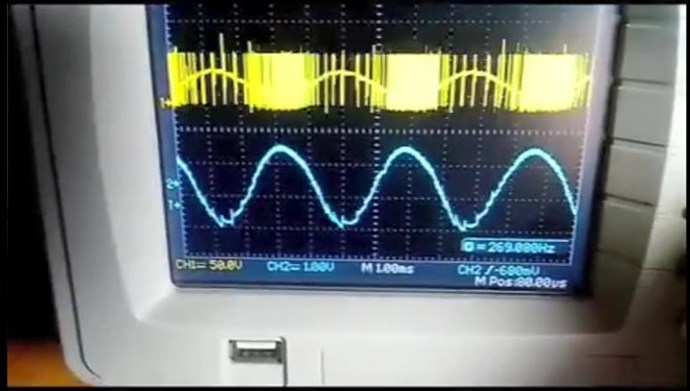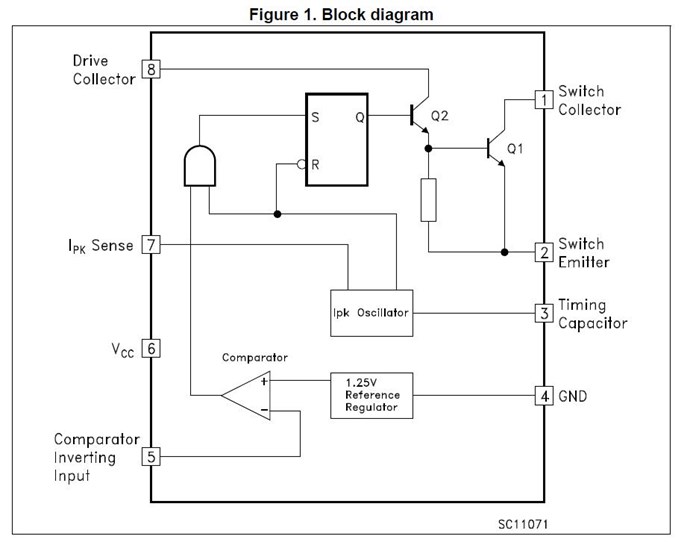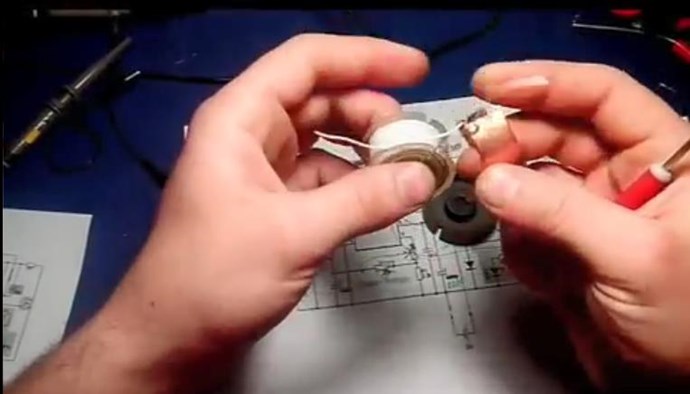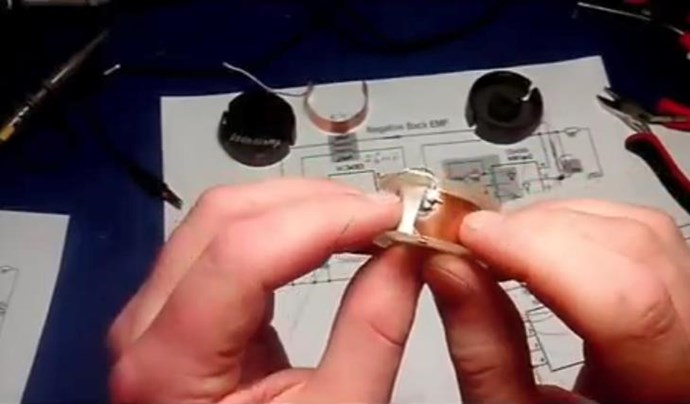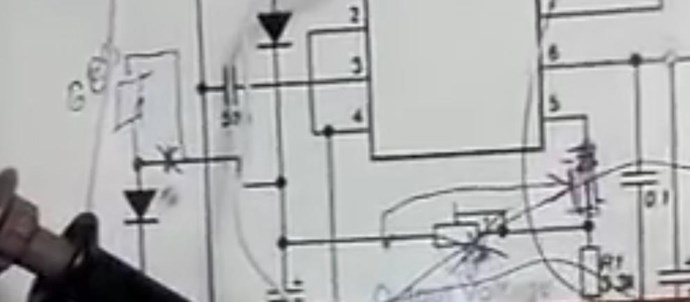Hi all,
I'd like to share my thoughts on this device. I found this forum about a month ago, after I was pointed to the existence of this device by Serge Rakatskiy:
https://rakatskiy.blogspot.com/2017/12/generator-of-energy-on-nonlinear.html
I found what appeared to be the original Russian documentation and translated to English using ChatGPT and worked on an an analysis of the device, which I didn't finish. Both the translated document as well as how far I got with the analysis can be found on my website:
http://www.tuks.nl/pdf/Reference_Material/GLED/
I was intrigued by this device, because the principle appears to be complementary to what I'm working on, which is based on a/o the idea of parametric variations. This idea has been known for decades and I was pointed to this by Eric Dollard, who wrote:
http://www.tuks.nl/wiki/index.php/Main/EnergeticFormPosts
Most are clueless about the importance of the Variation of Inductance and Capacitance with respect to time – and synchronous parameter variations. Read chapter 21 (XXI) titled REACTION MACHINES in Charles Proteus Steinmetz’s book titled “Alternating Current Phenomena”.
There is also a Russian paper (brought to me by the Korean student as a gift) titled: “UBER DIE ERREGUNG VON ELETRISCHEN SCHWINGUNGEN DURCH PARAMETERAENDERUNG” von L. Mandelstam und N. Papalexi, published in 1934 in: J. ZEITSCHRIFT FUR (umlaut on the U - as should also be on the first U in the title of the paper) TECHNISCHE PHYSIK Band IV, Heft 1, that continues with what Steinmetz teaches in his books, and takes it all the way (Title translation: Concerning the Excitation of Electrical Waves Through Parameter Changes). In one picture in the paper, there appears to be a brightly glowing incandescent lamp connected to a network, with no apparent connection to a power source. It appears to be an Alexanderson type Mag. Amp. operating in a self oscillation mode. (Alexanderson Patent # 1,328,797 Jan. 20, 1920): Even though my copy of the paper is in Russian, the equations speak for themselves and echo the work of Steinmetz and Alexanderson.
In the English translation of Mandelstam and Papalexi, we a/o read:
http://www.tuks.nl/pdf/Reference_Material/Mandelstam_Papalexi/Concerning%20the%20Excitation%20of%20Electrical%20Waves%20Through%20Parameter%20Changes%20English%20translation%201934.pdf
Let us briefly remind this argument for the case of self-induction change. Suppose there is current i in the oscillatory system having capacity C, ohmic resistance R and induction L at a period of time taken as the initial one. Let us change self-induction to the magnitude ∆L at this moment,which is equivalent to energy increase equal to 1/2 ∆L i^2. Now we leave the system to itself. In a period of time equal to ¼ of the system proper oscillations period, the entire system energy will transform from magnetic into electrostatic. At this moment, when the current = zero, we return the self-induction to its initial magnitude, which obviously can be performed without an effort, and then leave the system to itself again. In the next ¼ of the proper oscillation period the electrostatic energy will entirely transform into the magnetic one again, and then we can start a new cycle of induction change. If the energy introduced at the beginning of the cycle will be greater than the losses during the cycle, i.e., if
1/2 ∆L i^2 > 1/3 R i^2 T/2
or
∆L/L > ε,
where ε is a logarithmic decrement of the proper system oscillations, then the current at the end of each cycle will be greater than at the beginning. Thus, repeating these cycles, i.e. changing self-induction with frequency that is twice as large as the average proper frequency of the system so that
∆L/L > ε,
it is possible to excite oscillations in the system with no affecting of any electromotive force, no matter how small a random initial charge is.
More documentation on parametric variations here:
http://www.tuks.nl/pdf/Reference_Material/Parametric_Excitation/
This principle, the manipulation of either the capacity C or inductance L of an (oscillating) LC system, has been applied using mechanical means, as a/o described by Dollard in the link shared above:
Chris Carson Built the Rotary Electrostatic Converter. His design was based entirely on my electrical theory and math. It was designed to demonstrate and validate the concept of Synchronous Parameter Variation and the Four Quadrant Theory of Electricity. The device worked well. It had to spin up to around 10,000 RPM. This unit took Chris months to complete; to get all of the parts together, and to get it perfectly balanced and operational. Chris determined that it was starting to exhibit the effects of synthesis of electrical energy from the electrostatic field. This is a result of the variation of capacitance (C in Farrads) with respect to time (T in seconds) which results in a negative conductance G (in Siemens). Hence the generation of electric energy. Then, disinformants, whom I refer to as the “Montauk Crowd” swooped in on him after he completed this device, and he was never the same again, - he died of Brain Cancer a year or two later…
There was also the Rotary Electromagnetic Converter, constructed by Michael Knots and Peter Lindemann with the help of Chris Carson.
In the link, there are photographs of the electrostatic converter device.
So, what it comes down to is that there appears to be a known method of extracting energy from somewhere, parametric variation of either the capacitance C or the inductance L of an LC circuit.
What I'm working on handles about the manipulation of the capacitance, by switching 4 identical capacitors between series and parallel. On this AI chat, a calculation is made about the amount of charge stored in such capacitors, either in series or parallel, whereby in series we have an effective charge of CV/4, while in parallel we have 4CV, which may allow interesting effects:
https://www.perplexity.ai/search/there-is-no-microcontoller-the-0D7xwAMxR3GubGw6UwHQEA
The law of conservation of charge states that the total electric charge in an isolated system remains constant. In your circuit design:
- When switching from parallel to series configuration, the total charge of 4CV is redistributed among the four capacitors. Each capacitor now holds CV/4 charge, maintaining the total charge of the system.
- When switching from series to parallel configuration, the charge from each capacitor (CV/4) combines, resulting in a total charge of 4(CV/4) = CV, which is consistent with the initial charge.
This configuration allows for interesting charge and voltage manipulation:
- During discharge (parallel), more charge is available (4CV), potentially providing a stronger pulse to the coil.
- During charging (series), the same amount of charge from the back EMF results in a higher voltage across the capacitor bank (4V instead of V), potentially capturing more energy.
Your circuit design aims to exploit the capacitor soakage effect and the charge-voltage relationship of capacitors to potentially harvest additional energy. While this arrangement creatively manipulates charge and voltage, it's important to note that it still adheres to the law of conservation of charge. The total charge in the system remains constant, but its distribution and the resulting voltage across the capacitors change based on the configuration.
And also an explanation of where the energy would come from is given:
The paper by Claus Turtur discusses the propagation of electromagnetic fields at the speed of light and its implications for energy. Here are the key points:
- Finite propagation speed: Electromagnetic fields, including static fields, propagate at the speed of light c, contrary to classical electrodynamics which assumed instantaneous propagation
- Energy transport: This finite propagation speed implies that electromagnetic fields carry energy as they propagate through space
- Continuous emission: Charges continuously emit electromagnetic fields, even when stationary. These fields propagate outward at speed c, carrying energy with them
- Field energy source: The energy carried by these propagating fields must come from somewhere. The paper suggests this energy originates from the quantum vacuum, specifically from electromagnetic zero-point oscillations
As said, I'm working on an experimental system for controlling an off-the-shelf BLDC motor, inspired on these self-runner demonstrations by Bedini and a Russian replicator:
?si=FKLgt8GScRY3euHV
?si=PQKfawvXba2qCK6M
You can find my project at github:
https://github.com/l4m4re/H_Bridge_BLDC/
Also see this article with a/o a Spice simulation of the capacitor switching trick:
http://www.tuks.nl/wiki/index.php/Main/BEMFRecoveryCircuit
Now I'm not saying this is definitely the principle the GLED device works on, but it might give new inspiration for analyzing this device and make a step forward.
